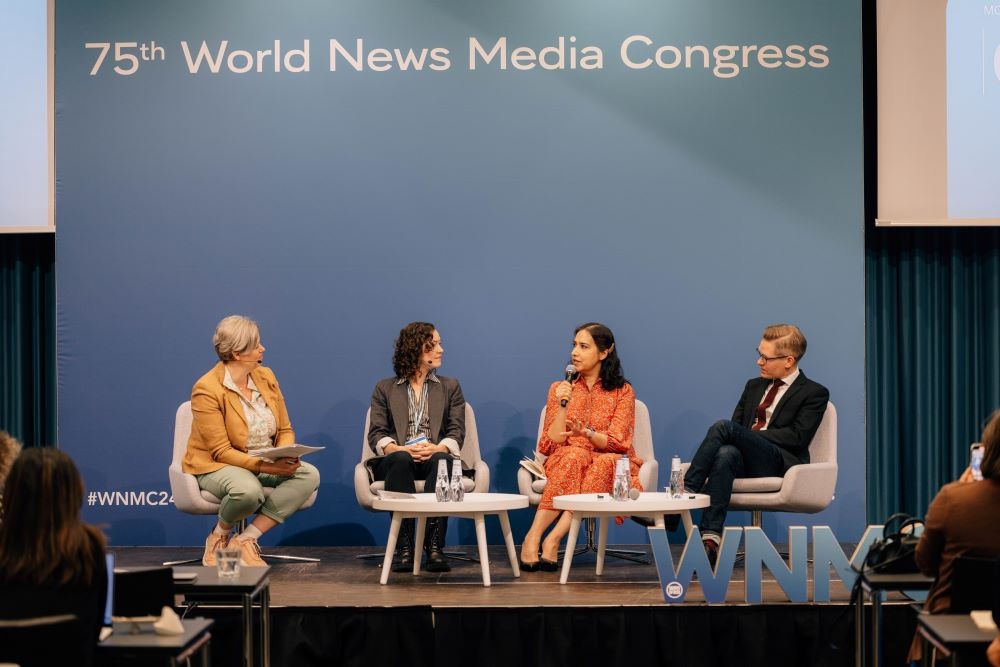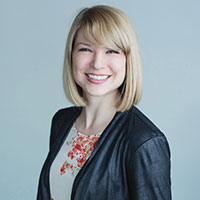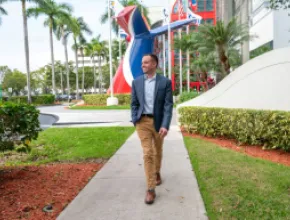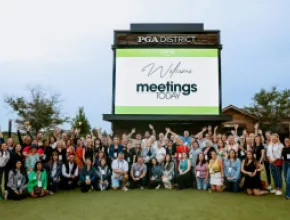It’s likely you’re hearing the term “intellectual capital” thrown around more during your site selection and RFP talks with destination marketing organizations (DMOs). But what is it, really? And why does this matter to a meeting planner?
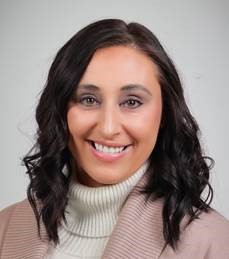
“I think that's kind of the No. 1 question that planners typically have for us. They're like, ‘Intellectual capital. Sounds great. But what does that even mean?’” said Emily Scheiderer, senior director of education, sales and services for Destinations International (DI).
Defined as the collective knowledge, expertise and innovative potential within a destination, intellectual capital is emerging as a strategic tool in the planning of events. The truth is, harnessing local assets in a destination can reap major benefits for an event, be it a massive convention or modest training meeting. By tapping into resources on the ground, you’re not only enriching your attendees’ experience, but your event can leave a legacy in the destination in which you meet.
To help you better partner with DMOs to maximize the power of intellectual capital at your next event, we tapped Scheiderer and other leading organizations for expert advice and case studies on how to do it right.
What Does Intellectual Capital Look Like?
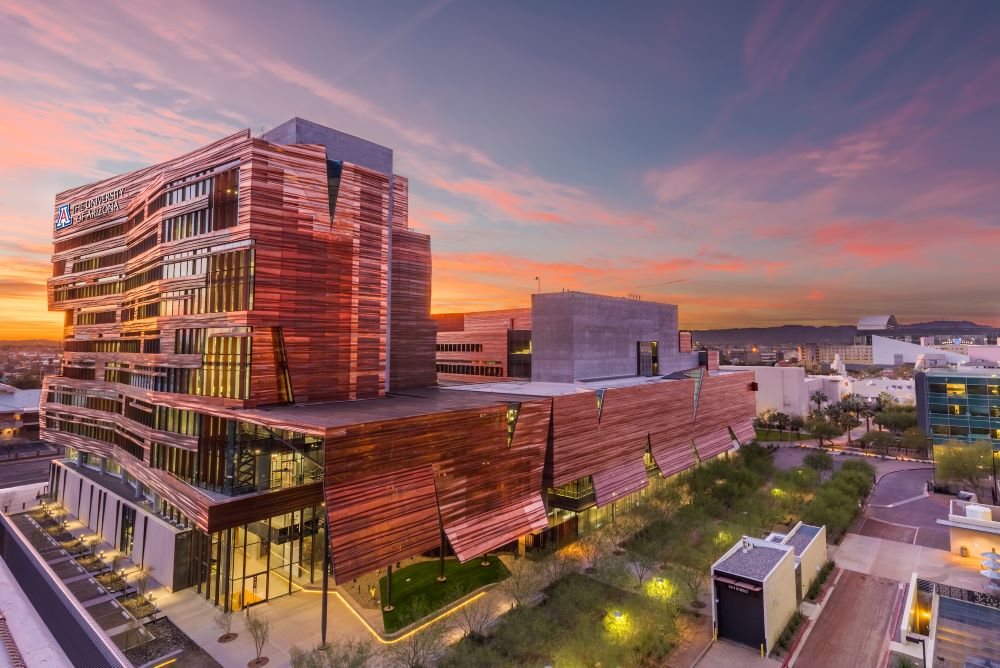
On the surface, when many meeting professionals hear the term intellectual capital, they think of speakers—and that holds true. Leveraging local talent for keynotes and breakouts from universities, research facilities or executives working in other industries relating to your meeting content holds incredible value for your attendees and your bottom line; you don’t have to pay for lodging or transportation to bring top-notch expertise to you.
However, intellectual capital is so much broader than just speakers. It can be brick-and-mortar locations like facilities or working labs, where your attendees can tour or observe demonstrations. Take Phoenix, for example, which has established itself as a leader in biosciences thanks to the Phoenix Bioscience Core (PBC), a 30-acre life sciences innovation district in the heart of downtown Phoenix that is home to the highest concentration of research scientists in the state, featuring anchor institutions Arizona State University, Northern Arizona University and the University of Arizona. The campus borders the Phoenix Convention Center and 4,000 hotel rooms.
“The PBC has become part of our converting convention learning environment and footprint given the state-of-the-art resources, real-life learning, labs offering hands-on simulation trainings whether it's nurses or physicians or anyone in the healthcare space. That has been a tremendous community asset for us,” explained Lorne Edwards, chief sales officer for Visit Phoenix. “Especially as we promote that to the healthcare community of meetings and conventions.
“We have seen organizations like American Telemedicine Association, we've seen chest physicians, we have had critical care medicines, conferences and so many others that have tapped into the resources that are available,” he continued, “whether that be speakers, whether it's livestreaming from the wet labs into the convention center and the tradeshow floor.”
Intellectual capital extends beyond healthcare and science, too. It can mean drawing upon the arts and culture of a destination to enhance your event. That could be philanthropic programs tied to these industries that you can use for a CSR activity, for example.
If your meeting centers around the food industry, maybe you leverage the local food and beverage scene by partnering with chefs for hands-on learning experiences.
[Related: How CVBs Are Connecting the Next Generation to Jobs in Hospitality]
Why Should You Tap Local Intellectual Capital?
According to Scheiderer, educating both DMOs and planners on how to take advantage of local intellectual capital is a big initiative for DI. At the end of 2023, the organization launched an intellectual capital training program for sales and service professionals in the DMO world.
“We’ve really been trying since then to not only create that training for our members, but to create reciprocal opportunities of education for the planner so that they understand how to tap into this, too,” she said.
A big part of this is educating planners on the big-time benefits that come with incorporating intellectual capital into their destination selection calculus. Scheiderer views this in four major ways:
- It affects the bottom line. By leveraging local talent, facilities, groups, etc., you will likely save money on transportation costs to fly such expertise in for your meeting.
- It creates a unique attendee experience. You’re creating an experience that can only happen between your event organization and a specific destination—it can’t be replicated. And that can be a compelling selling proposition and attendance driver.
- You’re supporting local. In an age where attendees are possibly more conscious than ever about where they invest their time and resources, marketing your event as supporting the local economy can reassure attendees they are leaving a destination better than they found it.
- Your event can leave an impact. In addition to economic impacts, leveraging local intellectual capital can impact a destination positively in other ways. By reducing transportation of resources, you’re reducing climate impact. You can make a difference with philanthropic impact (CSR). You might even be able to leave an impact on local issues important to your stakeholders, (i.e., abortion, LGTBQ+ rights, etc.) by supporting organizations for your cause on the ground.
How Destination Partners Are Elevating Intellectual Capital
Some DMOs might just be discovering the value of selling the intellectual capital in their destination to prospective meeting and event groups. Others have made it a huge part of their brand.
Copenhagen Legacy Lab
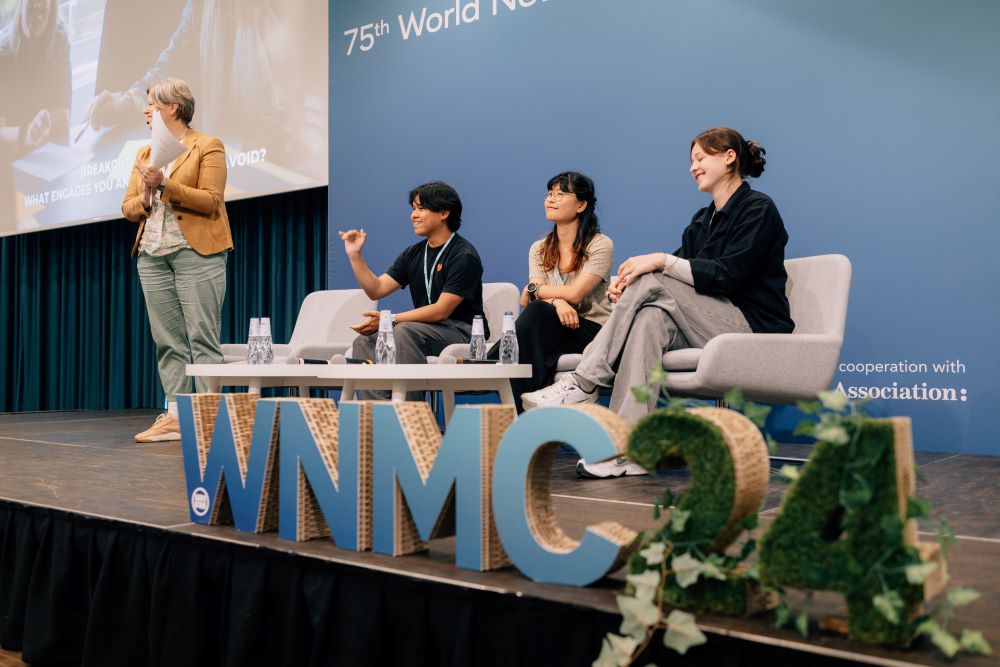
Across the Atlantic, Copenhagen CVB has created an entire department around the idea called the Copenhagen Legacy Lab. Born in 2019, the Copenhagen Legacy Lab’s intent is to provide a “strategic approach to creating positive long-term impact from congresses and events.” It does this by not only connecting planners with local resources on the ground, but partners with a group to help them leave a legacy behind in both Copenhagen and within their industry.
A recent example is the World Association of News Publishers’ (WAN-IFRA) 75th World News Media Congress, which came to Copenhagen in May 2024, drawing 1,000 attendees from 85 countries. Copenhagen Legacy Lab facilitated the work between WAN-IFRA and local host, Danish Media Association and local stakeholders, International People’s College in Denmark and University of Southern Denmark, to tackle a major challenge affecting global news media: news avoidance among Gen Z.
Copenhagen Legacy Lab activated the International People’s College, a Danish folk high school that enrolls students from all over the world. The school hosted a workshop with 70 students and 12 event attendees, where they created a set of news values dubbed “The Copenhagen Criteria,” which was then presented by a panel of three students at the World News Media Congress.
“We want to spread the knowledge of the huge potential which lies in using congresses [events] as a lever to put important subjects on the agenda—to the benefit of both the organization, the local stakeholders and the community,” said Gerda-Marie Rist, lead of Copenhagen Legacy Lab, of the ultimate goals of the department. “We are continuously working to exploit the synergies between the vision of the congresses and ongoing local initiatives, as this will save resources and often end up in very powerful collaborations.”
Medical and Technology Expertise in Las Vegas
More compelling examples closer to home include Las Vegas. While Lisa Messina, chief sales officer for Las Vegas Convention and Visitors Authority (LVCVA), acknowledges that intellectual capital might not be top-of-mind when you think of Las Vegas, her team’s job is to show you why it should.
“Not everybody, but there's still a significant enough size of people who think that we are just this gambling and entertainment town. And we are a young community,” she said. “It's telling that story that we're not just this gaming and entertainment town, we are a thriving, growing, evolving community. And there's all of these assets as we develop our own education systems, better our healthcare systems. We want to be seen as a place that drives innovation and technology. And I think a lot of people will give us the nod because they see it in our venues.”
Medical and veterinary meetings, Messina said, have a big resource in the Viticus Group, just five minutes from the Harry Reid International Airport and less than 10 minutes from the Strip.
What started as a veterinary conference 97 years ago has evolved into a two-facility campus where medical professionals—primarily veterinarians, or surgeons on the human health side—can come to hone their surgical skills, whether that’s learning procedures, new equipment or improving their overall knowledge within their industry. According to Andrea Davis, CEO of Viticus Group, the campus is the largest (both for animal and human) hands-on training and education space of its kind in the world. As a bonus, the campus provides nearly every amenity a meeting planner requires outside of lodging.
“We have an entire AV department, we have a transportation team and vehicles, we have a food and beverage department. So, we're able to do absolutely everything with the exception of hoteling at our space,” she said.
Combined, the two buildings provide 140,000 square feet and can accommodate up to about 800 people for hands-on training, meetings, lectures and more. Highlights include:
- Eastern Campus has a ballroom for up to 500 attendees, breakout space and 12,000 square feet of lab space.
- Oquendo Campus can host up to 350 people total with an auditorium space that can hold 190, meeting breakout spaces and surgical space for hands-on training.
Viticus Group also continues to host one of the largest veterinary conferences in the world, WVC, with the February 2024 iteration being the largest on record, welcoming more than 20,000 attendees. Because of this, Davis and her team have experience on the meeting planner side, an added bonus when collaborating with other meeting planners on their events.
“We are meeting planners also because of our conference, so we really get both sides of the spectrum. And we just try to make things as easy as possible,” Davis said. “We have an incredible team that's dedicated to both the human health and the veterinary side. Anything we do from the moment [the group] walks in, from the concierge team all the way to the labs…the ease of putting things on is incredible.
“There's absolutely nothing better out there in terms of being a one-stop shop and has been able just to take over and do everything for their group,” she added.
Recent groups to take advantage of Viticus Group resources include the American Society of Interventional Pain Physicians for its society meeting, which provides didactic training, education, hands-on training and more.
AO North America is another organization that brings members—surgical professionals—in for hands-on training and yearly education.
“This is what we do every single day, year-round, for a variety of organizations,” Davis said.
Other venues in Las Vegas lend themselves seamlessly to the technology space. Take the Sphere, for example. Though largely viewed as an entertainment venue, hosting U2 for its first residency, the venue also hosted its first keynote event this summer for Hewlett Packard Enterprise’s HPE Discover 2024 event, showcasing how it can leverage its full technical capabilities and cutting-edge technology to create a truly singular experience for global brands.
Black Fire Innovation Center is another. Originally opened in 2020 in collaboration with Caesars Entertainment at the University of Nevada, Las Vegas (UNLV), the center combines the power of big tech with the research resources on campus to accelerate development in the hospitality, gaming and entertainment industries.
“It’s a working lab that blew up and evolved,” Messina said. “The impetus was innovation in gaming technology, and now it has become this hub for all of the biggest tech manufacturers, like LG and things like that, where they are putting all types of different assets to the test, if you will.
“You can go in and utilize not only the technology that is presented there, but you can kind of come in and do training in the technological space or see what the emerging technologies are.”
Meeting space and reception spaces are available, too.
[Related: 5 Destinations That Connect Meeting Planners With Diverse Suppliers]
3 Key Tips for Planners During the RFP Process
During the RFP process, consider these three tips from Scheiderer to capitalize on the knowledge power in a destination to enhance your meeting.
- Work with the DMO from the get-go. Even if you’re contracting directly with a hotel, convention center or other property, the DMO is going to be your best resource for connecting with local corporations, the mayoral administration, research facilities or any other entity that you want to tap for a richer experience at your event.
- Know the indicators of success in your industry’s space. What does value look like to your stakeholders? Share this with the DMO at the beginning of RFP talks. It’s much easier to select a destination that can achieve your group’s goals and satisfy stakeholders when intellectual capital is considered at the beginning of the destination selection process.
- What are the gaps in your event? Consider if intellectual capital can fill those gaps. Whether you’re stuck on F&B experiences, CSR activities or searching for keynote speakers, the RFP can be a really good starting point to find the right destination, rather than picking a destination and trying to make it fit later. Ask the DMO what the landscape of your industry looks like in their destination. Is it a huge area of growth or focus? “Also ask more intentionally, in your concessions, about things that are tied to intellectual capital,” Scheiderer advised. “If we bring this to your destination, if we guarantee we will only use local keynotes, is there a way to support that in the concession requests?”



